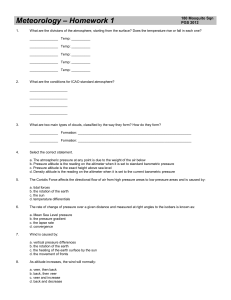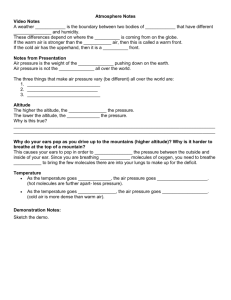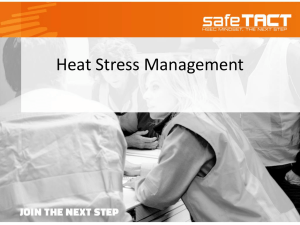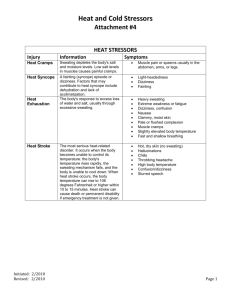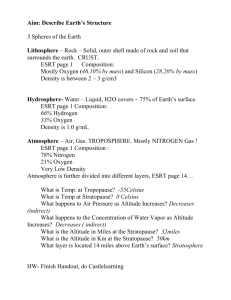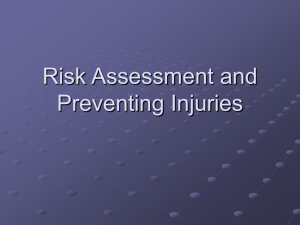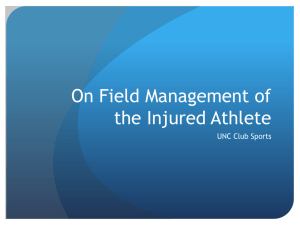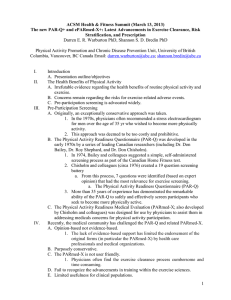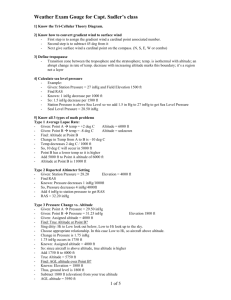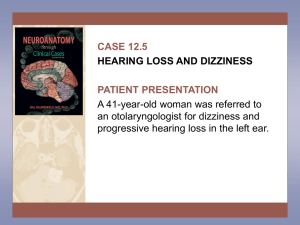unit 2
advertisement
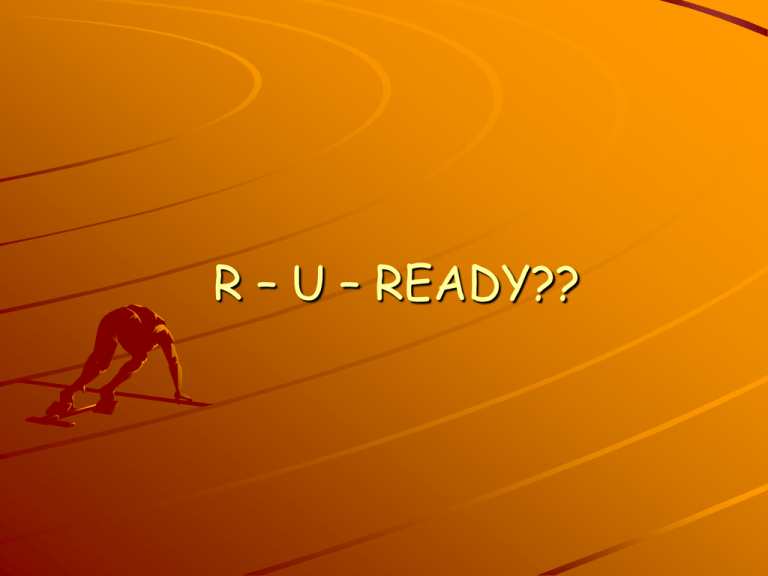
R – U – READY?? OBJECTIVES: Explain how to prepare for physical activity. Explain how environment affects physical activity. Describe some steps for dressing appropriately in normal conditions. Define: heat index; humidity; hyPERthermia vs hyPOthermia PAR-Q; wind chill Medically Ready? ?? beginner vs habitual? ?? younger vs older?? ?? do you understand how to prepare for environmental conditions?? PAR-Q ACTIVITY READINESS Has your doctor ever said that you have a heart condition and that you should only do physical activity recommended by a doctor? Do you feel pain in your chest when you do physical activity? Do you have a bone or joint problem that could be made worse by a change in your physical activity? Do you lose your balance because of dizziness or do you ever lose consciousness? PAR-Q ACTIVITY READINESS Is your doctor currently prescribing drugs for your blood pressure or heart condition? Do you know of any other reason why you should not do physical activity ? you answered YES to one or more questions, talk with your doctor before you start becoming much more physically active. If you answered NO to all questions, you can be reasonably sure that you can start becoming more physically active right now. Be sure to start slowly and progress gradually - this is the safest and easiest way to go. STRESS TEST Treadmill: identifies at risk problems like heart attacks Medical Readiness for Sports Do you plan to participate on an organized team that will play intense competitive sports (e.g., varsity team, traveling club team)? If you plan to play a collision sport such as football, boxing, rugby, or ice hockey, have you been knocked unconscious more than one time? Do you currently have symptoms (e.g., pain, dizziness) from a previous injury? Do you currently have symptoms from a previous back injury, or do you experience back pain as a result of involvement in physical activity Do you have any other symptoms during physical activity that give you reason to be concerned about your health? EXTREME WEATHER CONDITIONS Weather can be determining factor IF-WHEN-HOW STRENOUSLY you exercise. Adaptability of your body? Guidelines should be followed…especially “beginners”. HOT HUMID WEATHER Humidity Amount of water vapor in the air. HyPERthermia Overheating...body temp rises too high Sweat= Body temp up = Sweat evaporates= Body cools HIGHER HUMIDITY = less body cooling HEAT ILLNESSES CONDITION HEAT CRAMPS DEFINITION Muscle cramps caused by excessive exposure to heat and low consumption of water. HEAT Caused by excessive exposure to heat. Signs: EXHAUSTION paleness, cold clammy skin, profuse sweating, weakness, tiredness, nausea, dizziness, muscle cramps, and possible vomiting and fainting. Body temp may be normal or slightly elevated. HEAT STROKE Caused by excessive exposure to heat. Signs: High body temp; hot, DRY, flushed skin; rapid pulse; lack of sweating; dizziness; or unconsciousness. This is a SERIOUS condition and requires PROMPT medical attention. CAN RESULT IN DEATH! COMMON SENSE GUIDELINES Begin gradually: Drink water: Wear proper clothing: “porous” CHANGES IN GEAR CLOTHING…. Which would be a better choice? Why? Light = reflect Dark = absorbs COMMON SENSE GUIDELINES Rest often: Avoid Extreme Heat and Humidity: Get out of heat and cool body: HEAT INDEX http://www.5min.com/Video/Runnin g-Tips-in-Hot-Weather-517124781 g-Tips-in-Hot-Weather-517124781 COLD, WINDY, WET WEATHER HyPOthermia: Excessively low body heat. Signs/symptoms: Shivering; numbness; drowsiness; muscular weakness; confusion; disorientation. FROSTBITE SYMPTOMS: Skin becomes white or grayish yellow and looks glossy Pain is sometimes felt early, but subsides later. Feeling is often lost and NO pain is felt! FROSTBITE Blisters may appear COLD WEATHER GUIDELINES Avoid extreme cold and wind. Determine wind chill factor. Time?? New chart…. WIND CHILL INDEX COLD WEATHER GUIDELINES Dress Properly: Layers vs bulk Loose vs tight Cotton vs “moisture wicking” Nylon - Plastic Head gear Mittens vs gloves COLD WEATHER GUIDELINES Avoid exercising in icy/cold wet weather Altitude challenges Take time to adjust!!! Drink lots of water! Thin air= headaches, nausea., vomiting Altitude Signs and Symptoms Persistent dry cough Fever Shortness of breath when at rest Headache that doesn't respond to over-thecounter medications Unsteady walking Persistent vomiting Gradual loss of consciousness Treatment for Altitude Sickness Oxygen will relieve the symptoms Rest, eat healthy foods and drink plenty of fluids Smoking and alcohol will make symptoms worse IV fluids or hydration will help depending on severity Descend to a lower altitude Hospitalization may be required GENERAL READINESS: Dressing for physical activity. Wear comfortable clothing. WASH CLOTHES REGULARLY!! Dress in layers when outside. Wear proper socks. Wear proper shoes. Warm-up & Cool Down WARM-UP Prepares body for activity Enhances performance Can prevent injuries Usually includes heart and muscle… Warm up Heart = min of 2 min…max = several minutes. Trying to increase body temp. Stretching S-L-O-W SPORT SPECIFIC! COOL DOWN Recovery time for body. Heart cool down can prevent dizziness or fainting. Hard exercise = increased blood flow to muscles ( less to head) Stretching actually redirects blood to heart. Again…s-l-o-w-l-y. REVIEW?? These questions are due ________________________. Your class notes are also due at this time. What are environmental factors that can make activity unhealthy or unsafe? What are some guidelines for dressing properly for physical activity in normal conditions? Why should you perform a warm-up and a cool down, and how can you perform them properly?
